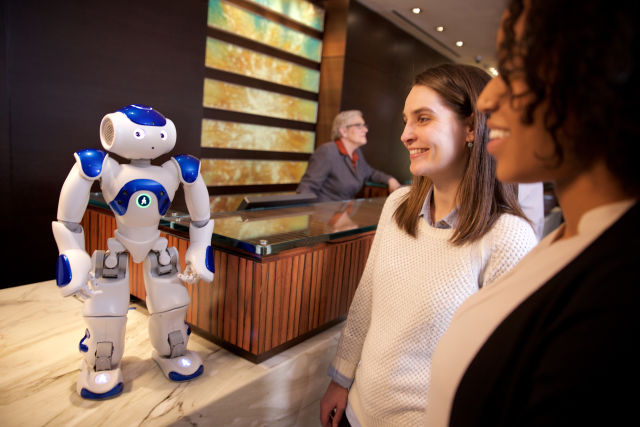Hilton Hotel teamed up with tech giant IBM to test a robotic concierge, named Connie, that’s powered by IBM’s artificial intelligence (AI) software Watson.

Connie’s name was given after the hotel’s founder, Conrad Hilton, and the robot currently assists guests checking into the Hilton McLean hotel in Virginia. She is stationed next to the reception desks, and helps guests navigate around the hotel or find restaurants and attractions nearby. In her current form, she is not able to check guests in just yet, but she is being modified to do so in the future.
Physically, Connie is made of Nao, a 58cm-tall French-made Android that has grown to be the go-to platform for educational and customer care tasks due to its cost effectiveness at $9,000. The robot’s brain is based on Watson, IBM’s system engineered to interpret people’s questions and answer them the best way fit.
Using Watson’s natural language processing ability, Connie is able to welcome guests, understand their questions, and answer appropriately. The information she is equipped with comes from the database travel platform, WayBlazer, which is also an IBM partner. Connie also uses a machine-learning algorithm to improve herself through continuous human interaction by learning from frequent inquiries how to properly answer and recommend.
“This project with Hilton and WayBlazer represents an important shift in human-machine interaction, enabled by the embodiment of Watson's cognitive computing,” Rob High, chief technology officer of Watson said.
And Connie is not the first robot to work in a hotel – the Hen-na Hotel in Japan is mostly run by robots, with the exception of ten people on staff. The concierge there is a velociraptor wearing a blue bowtie.
Previously, IBM has used Watson’s capability to do more than just tell people where the best restaurants are. Its uses have ranged from winning TV quiz shows to participating in medical diagnosis. Robots like Connie, however, could eliminate millions of jobs in the service industry. For those in the industry, it may be time to start worrying.
Source: Ars Technica
Advertisement
Learn more about Electronic Products Magazine





